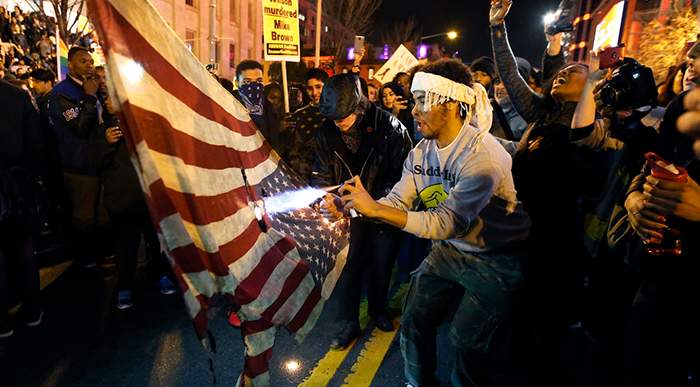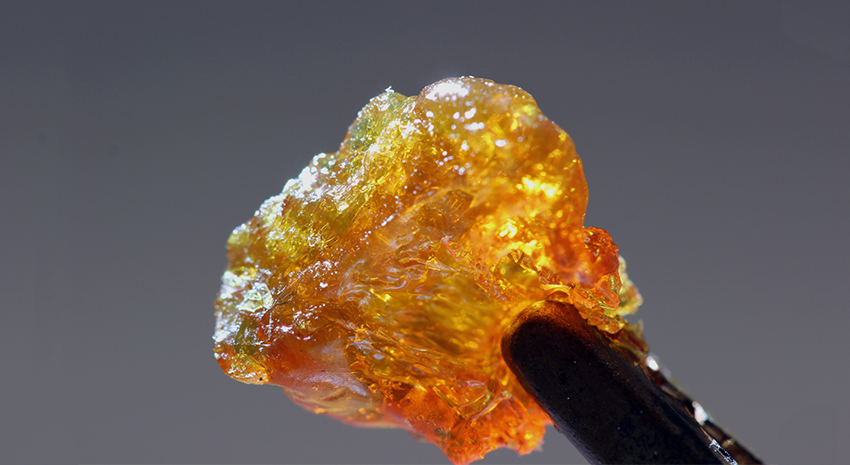Why, hello there, traveller! I hope you’ve successfully made it through another week of post-election turmoil! Last week, I gave you lots of GIFs of people flipping, to illustrate Mr. Trump’s incessant flip-flopping since the election. This week, I was stunned out of my eternal trance to read the President-Elect’s tweet regarding flag burning.
This surprised me, considering that flag burning and all types of flag desecration are protected by the First Amendment of the Constitution. Which leads me to wonder: Is he becoming a dictator? And also, what have been the most important moments in patriotic destruction in America’s history?
The American flag design was confirmed by the Continental Congress in 1777.

But, due to a splintering of designs, arguments on how many stars should be presented, and what exactly should go in the tiny blue square next to the stripes, it was not widely flown or displayed for over 80 years.

It was only after the outbreak of the Civil War that the American flag got some much needed Northern love.

When the Civil War ended, the flag love continued, and the flag was most commonly shown in the form of some hot merch. American flag clothes, accessories, homewares, and SWAG adorned stores. Naturally, Americans were like, ”YASS GAWD!” and handed over all of their coins!

Then, a bunch of cranky veterans and unions called the Sons of the American Revolution got together around 1890 and were like, “This is commercial exploitation!” They also yelled, “The flag is sacred!” This was a new idea and people were like, “Huh. I hadn’t thought about that.”

So, between 1897 and 1932, these groups lobbied successfully to pass laws in all 48 states preventing various forms of alleged desecration. It also helped that many immigrants, political radicals, and trade unions were already using the flag to make statements as part of their protests at the time.

It behooved lawmakers to shut down these kinds of anti-establishment protests and also pass flag desecration laws.

These laws generally outlawed 1) placing marks or attaching anything to the flag, 2) using the flag for advertising purposes, and 3) harming the flag physically or verbally in any way. A “flag” was also defined as any item of any shape or size that resembled the American flag.

In 1907, the case of Halter v. Nebraska hit the Supreme Court. Two men who sold “Stars and Stripes Beer,” which bore the flag, were found guilty of “cheapening” the flag.

This historic case did not address free speech, but declared that using the flag in commercial advertising would weaken both respect for the Union and the sanctity of the flag.

In 1931, the Supreme Court considered a cases which involved more abstract desecration of the flag: Stromberg v. California. This case involved a summer camp counselor named Yetta Stromberg, who, at age 19, directed her campers to raise a red flag.

This act was to pledge allegiance to communist ideas, and express sympathy for her campers who came from working-class families.

Stromberg won the case, with her lawyers citing that the Communist party was a legit political party in the U.S. at the time, and trying her was a violation of the First and Fourteenth Amendments. Shoulda been a red flag to the Supreme Court that this was even a case, but I digress.

After hearing news reports of an attempted murder of Civil Rights activist James Meredith, a man named Sidney Street burned an American flag in New York. Upon questioning by the police, he said, “Yes, that is my flag. I burned it. If they let that happen to Meredith, we don’t need an American flag.” This case was taken all the way to the Supreme Court in 1969.

Street won this case, and the Supreme Court struck down a New York Law that prohibited verbal speech against the flag. Flag burning and physical desecration was not discussed.

In the ’70s, two very groovy Supreme Court cases once again shot down prosecution for flag desecration. In 1974, a Massachusetts teenager was arrested and sentenced to six months in jail for wearing an American flag on the seat of his pants.

With the help of the ACLU, he was able to take it to the Supreme Court, which ruled that a “favorable attitude toward the flag” is not a requirement of a U.S. citizen.

Also in 1974, a college student from Seattle hung an American flag with peace symbols attached to both sides upside down from his apartment in a protest of the Vietnam War and Kent State shootings.

He was arrested and charged for desecration of the flag. The Supreme Court overturned his conviction on the basis that the flag was private property and it was a peaceful form of communication.

Finally, in 1989, Texas v. Johnson addressed the flag burning issue head-on. When Gregory Lee Johnson burned a flag in protest in Dallas, he was arrested, fined, and sentenced to a year in prison. The Supreme Court came down against this sentence and upheld that prohibiting flag burning is unconstitutional.

Uproar ensued. Virtually every member of Congress endorsed resolutions condemning the ruling. President George H.W. Bush and many Republicans maintained that an amendment would be needed to negate the court’s decision.

Thus, the Flag Protection Act (FPA) of 1989 was created. It provided that anybody who desecrates the flag (or tramples on it) would be fined $1,000 and up to one year in jail.

As a result, flags were burned at record rates in many cities during protests.

And that’s how we landed at U.S. v Eichman in 1990. The FPA was struck down by the Supreme Court in 1990, and the court deemed that to suppress free expression and pass laws banning flag burning is an “infringement of First Amendment rights.”

So no, Mr. Trump, you can’t penalize or revoke citizenship for flag burning. The SCOTUS has told us this about a dozen times, a dozen different ways. Keep up.

The flag stands for the very freedom to burn it. Denying people their right to free speech? Now THAT would be a real desecration of the stars and stripes.












